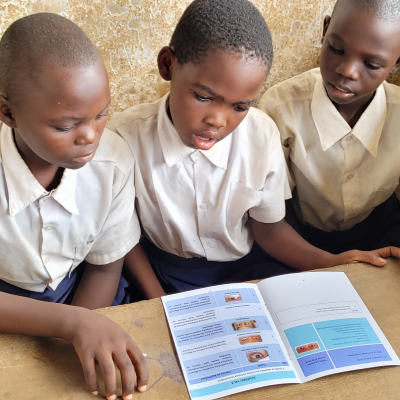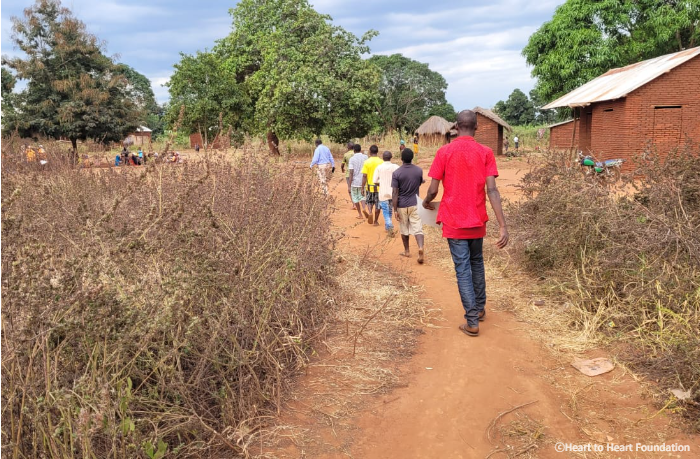[Mtama District
Community-Led Total Sanitation(CLTS)- 3 Significant
Steps of triggering process]
Heart to Heart Foundation conducted CLTS program in 37 sub-villages of 10 villages in Mtama District from May to July 2023 as below process;
Pre- Triggering : Trained CLTS Facilitators visit the areas before conducting CLTS triggering activities. This stage is for observing physical status on the targeted areas. Facilitators meet villagers and establish rapport firstly. And They inspect hygiene conditions and discuss up-coming triggering schedule together with villagers.
1. Facilitation of sanitation social map : Create a village map showing geographical features of the village and open defecated areas. The aim of map is to form the basis for a discussion with the community based on their demonstrated sanitation and hygiene profiles. This visual representation helps to identify contaminated areas in the village at a glance.
< Transect Walk with community people in the village >
2. Transect Walk (Walk of Pride, Walk of Shame) : This walk is to visit and observe open defecated areas indicated on a map. During walk, community members observe, ask questions, listen and discuss sanitary conditions with the Lead facilitator. Through this activity, community members feel shame and disgust and begin to realize the drawbacks of open defecation, leading to a change in awareness.
.png)
< Demonstration how human excreta contaminate water and food >
3. Water/ Shit Demonstration : Conduct activities that illustrate how shit found in the village affects people‘s daily lives. Facilitators enable community members to internalize how shit get back into their homes, water and consequently cause diseases. By demonstrating how open defecation contaminates food and water visually, it highlights the consequences of open defecation.
4. Shit Calculation : Calculate the amount of shit produced by one person in a day, and make residents aware that the cumulative effect of this shit leads to healthcare costs associated with sanitation-related illnesses. This stage shows that investing in improved sanitation facilities ultimately costs less than medical bills.
.png)
Post-Triggering:
After the education, each village formulates a plan for improving their sanitation and hygiene environment. Residents make a commitment to eliminate open defecation and write a declaration. Following this, established committees monitor the villages to ensure the successful eradication of open defecation. Villages that achieve open defecation-free status are awarded the ‘Open Defecation Free (ODF) Certificate‘ by the government. This certification not only encourages the village to maintain their open defecation-free status but also motivates nearby villages to strive for open defecation elimination.




.png)
.png)

.png)
.png)